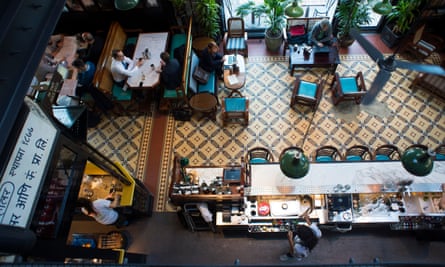Britain’s love affair with curry goes back centuries, long before the boom in the late 1970s saw restaurants popping up in every town and city. Well into the 90s and 00s, going for a curry, mopped up with naan bread and washed down with your drink of choice, was a Friday night staple.
But in recent years the traditional British curry house has been in decline, and the famous Balti Triangle in Birmingham, once home to dozens of Balti restaurants, has only four remaining.
“I have been quite vocal about this for years, telling the curry hospitality industry that they need to adapt and change and evolve,” said Aktar Islam, founder of Michelin-star Indian restaurant, Opheem.
He added: “There was a massive explosion of what we now refer to as British curry – which was inspired by cuisine from the Indian subcontinent but in reality had very little resemblance to its counterpart in India – but the problem with the model is that it never diversified, never really changed with the times.
“It started off with oversaturation, but the market is being shared as we’ve now got so many other cuisines as well and they’re not keeping up with it, and I would say that is what has led to the decline of the curry industry.”

He said the increasing popularity of Indian street food restaurants, such as Dishoom and local equivalents, reflect diners with diverse palates who want a more authentic experience.
“This new breed of Indian street food is closer to the real thing, and people appreciate provenance and authenticity,” Islam said. “The flavours are sharper and punchier, and the eating experience is different as it tends to be a selection of small powerful bites of food.”
There are conflicting figures on exactly how many Indian restaurants (most of which are Bangladeshi-owned) there are in the UK but most suggest they have dropped from about 12,000 in 2011 to about 8,000 today.
Labour shortages have become a major issue in recent years, with the children and grandchildren of restaurateurs often declining to take over the family business, alongside the decline in unskilled labour post-Brexit.
“The restaurants that I talk to, they’re all saying it’s incredibly difficult to get staff so I think that is causing big problems,” said Elizabeth Collingham, author of Curry: a tale of cooks and conquerors, which traced the origins of curry in the UK and how it was wrapped up in ideas of empire.
“I think it was a product of Raj nostalgia of the 1990s,” she added. “In the heyday of the cheap Indian restaurant, they were often quite small, almost invariably had red flock velvety wallpaper. They were often arranged in little nooks, were quite dark, and there were often cane chairs with prints of people hunting boar or something on the walls.
“You can still find that kind of restaurant, but now people are looking for so-called authentic food, they aren’t looking for raj nostalgia any more.”
Collingham said that the proliferation of curry in most households, and the fact you can readily buy it in supermarkets from jars or in the form of ready meals, may also have diluted its appeal in restaurants.
Andy Munro, author of Going for a Balti: The Story of Birmingham’s Signature Dish, said one of the attractions of curry for previous generations was that it presented a refreshing change from food eaten at home.
“People tend to want to have different things to their parents,” he said. “Growing up my parents were having lamb chops and boiled potatoes and salt was the most exciting thing on it, so when I left home I started to have curries because I had never had that at home. I don’t think that’s the case for young people any more.”
Islam said there was no denying the huge cultural impact curry houses have had on the UK, and how they paved the way for the modern food scene.
“We as a nation owe the curry industry a debt. I think it made our nation’s palates more diverse and more open to foreign flavours. It was a gateway to the plethora of cuisines that we now enjoy on a daily basis in the UK,” he said.
“But as with empires, you have the rise and the fall, and the same thing applies with business and trends as well. The British curry model had a good 50 year go at it, and it’s just coming to that natural stage now where the model needs to have a massive revision and connect with the diner again.”
Stay connected with us on social media platform for instant update click here to join our Twitter, & Facebook
We are now on Telegram. Click here to join our channel (@TechiUpdate) and stay updated with the latest Technology headlines.
For all the latest Lifestyle News Click Here

